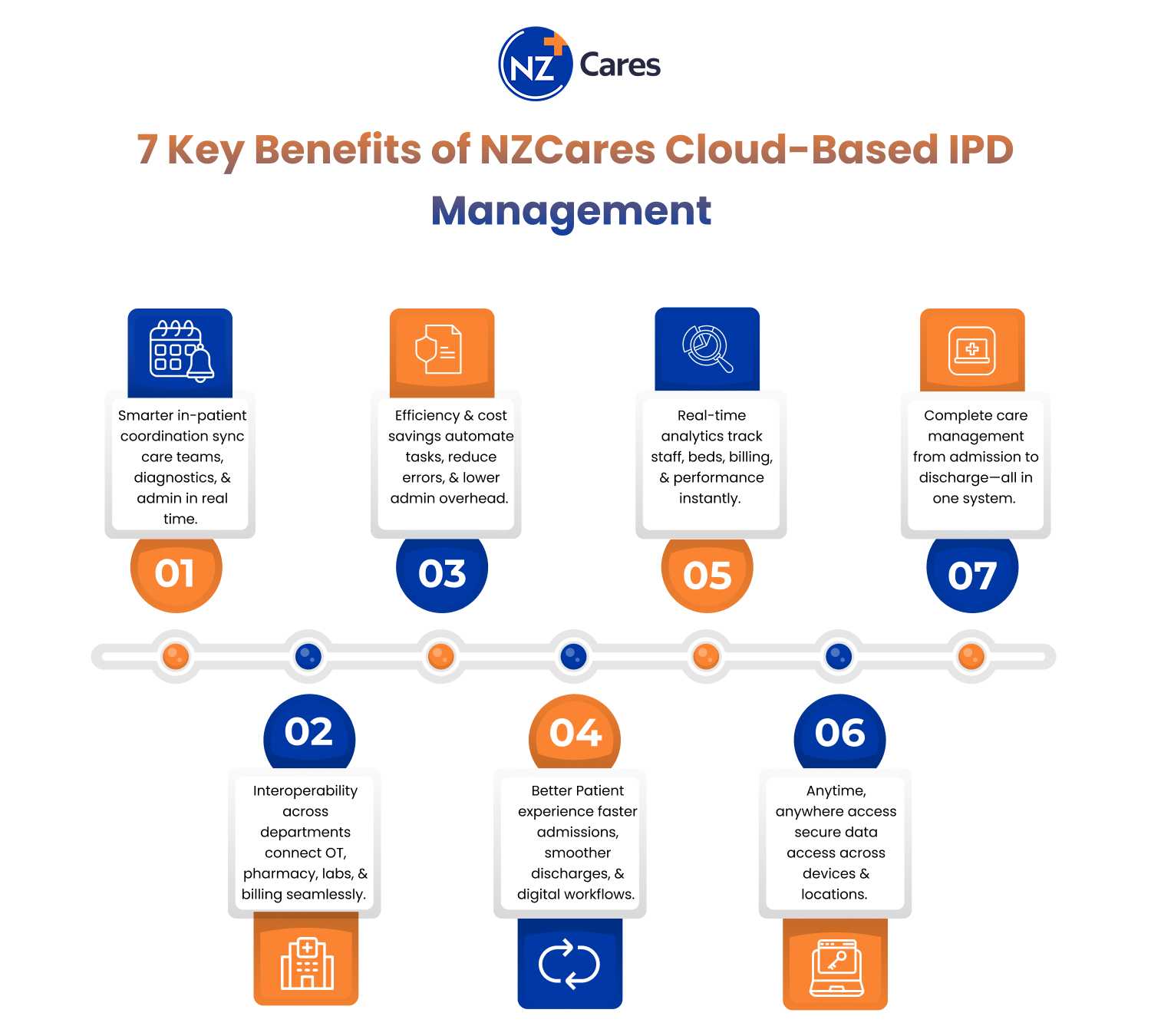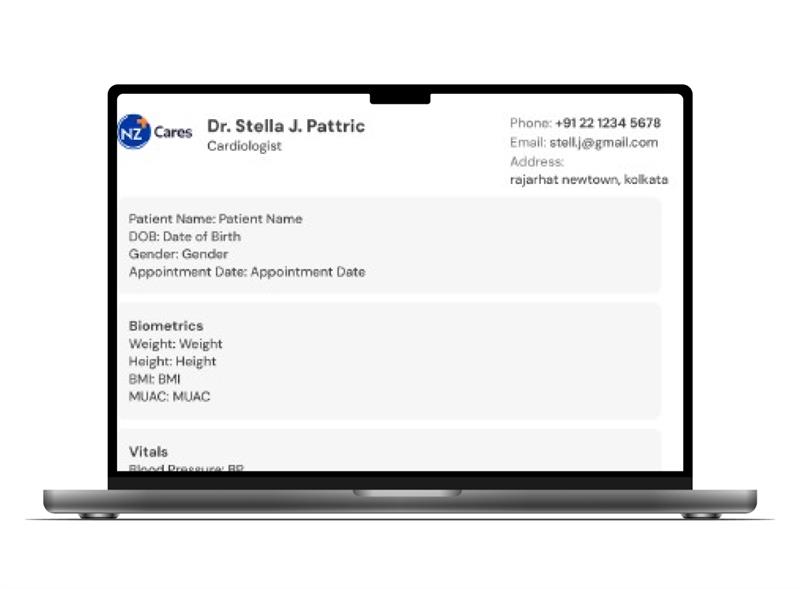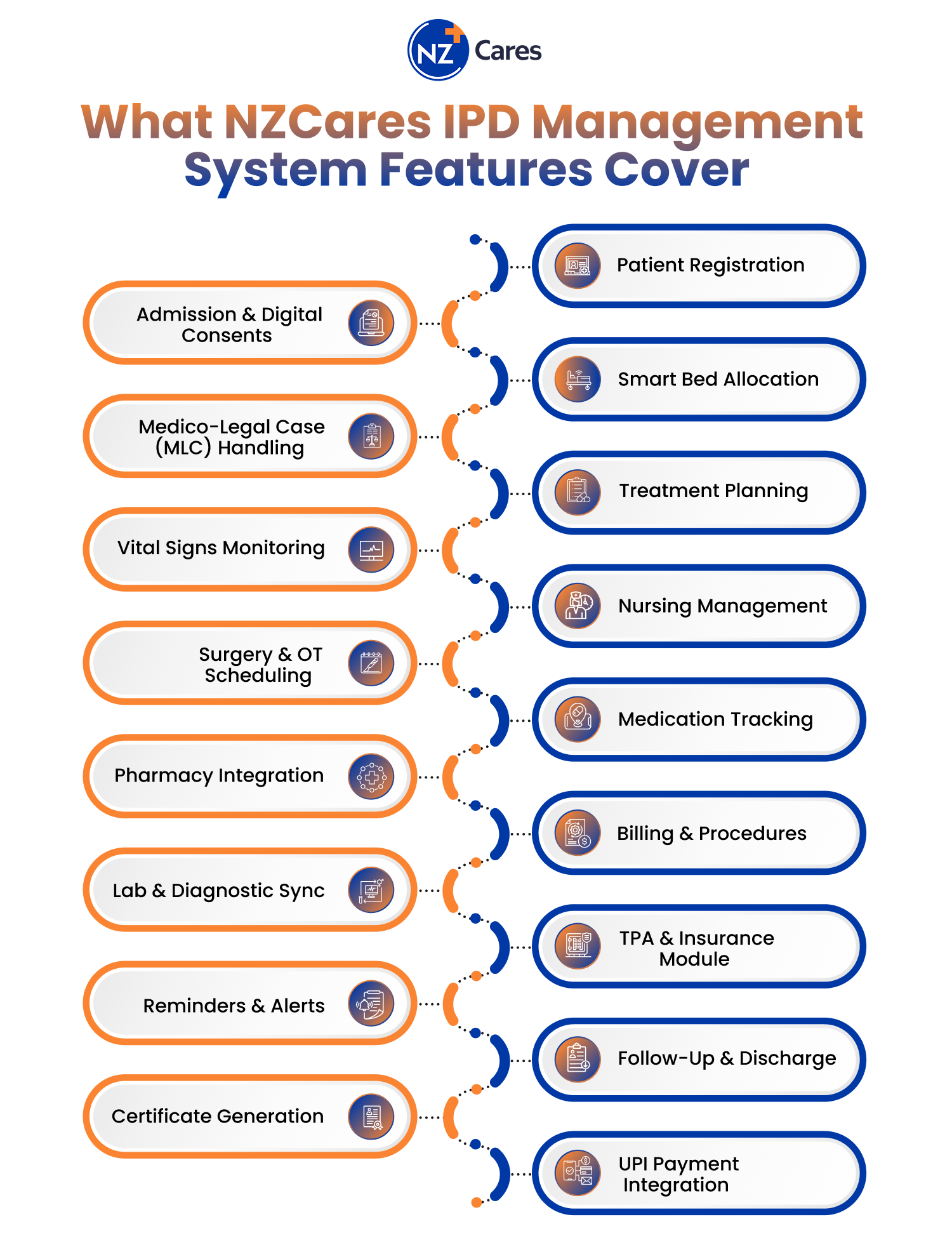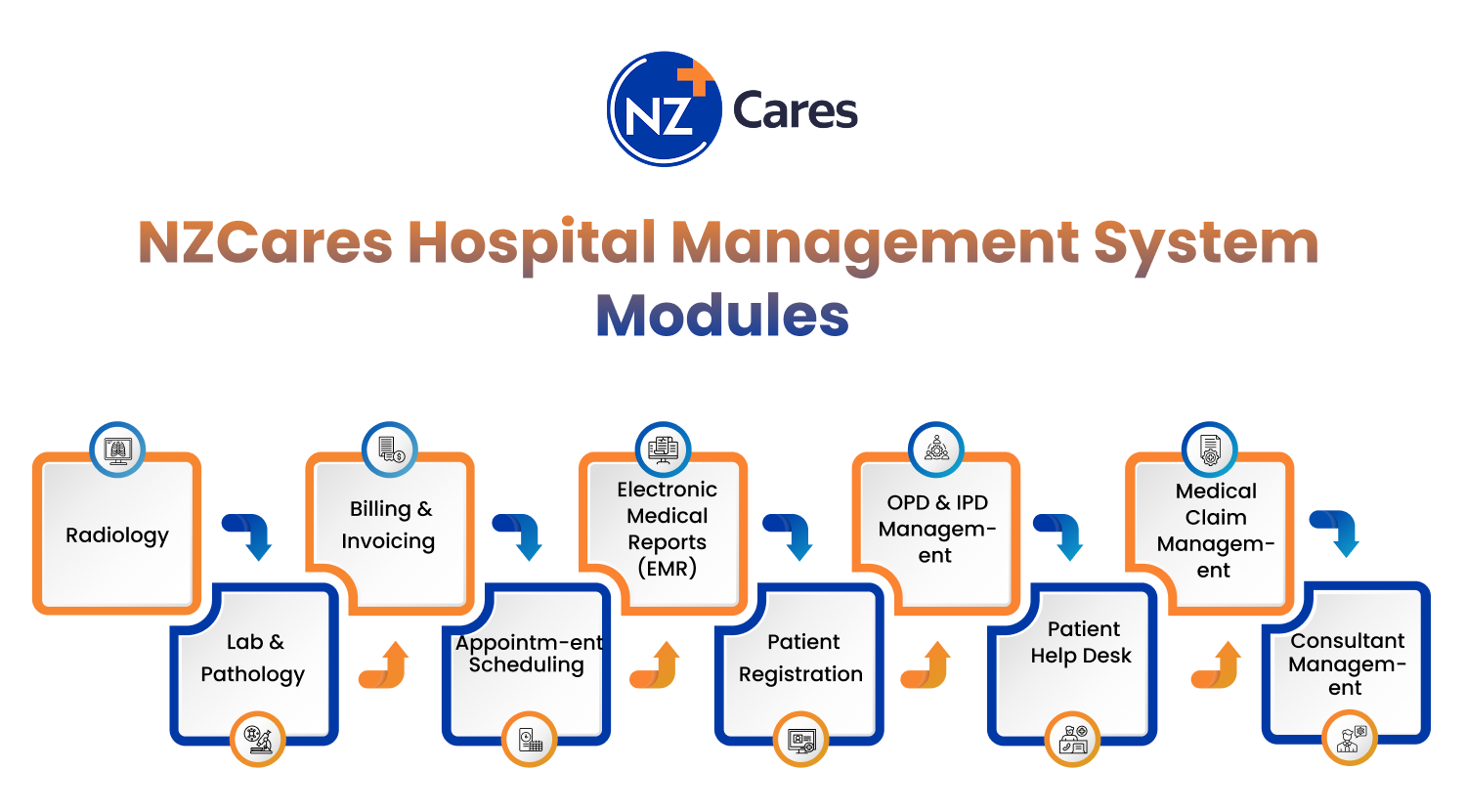By 2030, every industry will be running some part of its operations on the cloud, and healthcare is no exception. IPD care that was once defined by paper notes and file rooms is already undergoing a major digital overhaul with the help of agile and intelligent cloud-based IPD software.
Majority of hospitals are already massively crowded, and with the increasing awareness around healthcare, the pressure is high. Besides, balancing quality and operational efficiency is hard as well.
Minimal tasks such as tracking bed occupancy, staff rotations management, and patient vitals are ignored to serve more patients. This is where cloud systems step in.
A recent global survey estimates that cloud adoption in healthcare is 90% in 2025, particularly for inpatient workflow optimization.

But beyond buzzwords and dashboards, what makes cloud IPD management system so impactful?
The answer lies in their ability to simplify complex tasks: reducing paperwork, centralizing patient data, enabling quicker decisions, and offering seamless access from anywhere.
In this blog, we will break down how a cloud-based IPD management system like NZCares works, what makes it cloud-first, and why it is quickly becoming the backbone of future-ready hospitals.
Why Hospitals Are Going Cloud-First with IPD Systems
Until recently, inpatient departments were overwhelmed with fragmented systems, manual charting, paper files, and disjointed communication between teams. Nurses would call pharmacy for every dose. Admins chased down files. And discharges? They often took hours longer than needed.
Now imagine all of that happening in one synced-up digital space. That is the promise of modern cloud-based IPD software. Every department of in-patient is connected to one other to ensure the optimal efficiency is achieved in real time. IPD management software is clean, fast, and transparent for all while simultaneously keep an eye on patient data.
Here’s why cloud-first is becoming the new normal:
- Real-Time Coordination: Every department works coordinated. Every little update of patient health is visible across departments to see whether its vitals or a small note left by the doctor. It reduces repeat testing and diagnostics, delays, and miscommunication.
- Scalability with Zero Clutter: Healthcare is a growing industry and hospitals scale in the same manner. Cloud systems are perfect for fast moving facilities whose growth potential is vast.
- Anytime, Anywhere Access: Doctors can review patient records remotely, and caregivers do not need to wait to act on information. Mobile access becomes a lifesaver.
- Streamlined IPD Workflows: An IPD module in hospital ERP maintains smooth workflow by eliminating issues in admission, rounds, and discharges.
Read More: EHR Adoption Doesn’t Have to Be Hard: 5 Ways to Make the Shift Seamless
The Benefits We are Seeing in the Real World
Cloud-based IPD management software changes your whole thinking of how efficient your hospital can be. It is more than a tech upgrade to shift your hospital towards a smart and scalable future.
The difference is going to be huge as compared to manual processes. Your hospital hallways would feel the presence of fewer delays, less errors, and faster response. From bed management to billing, everything becomes tighter, more transparent, and easier to control. Here is how the IPD Management System is quietly rewriting the modern manual for hospitals across the country:
1. Real-Time, Everywhere Access
Those days of paging your hospital colleague from another department for a specific patient file are long gone. Cloud-based IPD software let doctor, nurse, and admins have view patient data in real time which they can access from anywhere and anytime.
For instance, you doctors can check consultations during off-duty hours or junior doctors when doing patient rounds, all record are visible across all the synced devices.
This is not just convenient; it saves lives.
A recent hospital audit showed a 35% reduction in prescription errors after switching to NZCares IPD module in hospital ERP systems as the standard.
Bonus Read: How to Choose the Best Hospital Management Software – Complete Guide
2. Bed Management Without the Guesswork
Hospital admissions used to resemble a jigsaw puzzle because of task such as discharges would not sync, emergency beds were not flagged, and communication lagged between housekeeping, nursing, and admissions.
Cloud-based dashboards now change all that. When a patient is discharged, the bed status updates the moment it is cleared by housekeeping. Nurses can see it. So can admissions. The system prioritizes emergencies and transfer to be solved earlier. Such smoother experience speeds up the turnaround time by up to 25% in high traffic facilities.

3. Fewer Bottlenecks, Happier Staff
When departments work in silos, delays are inevitable. Billing waits on discharge summaries. Lab teams ping nursing stations for patient IDs. Radiology holds reports due to clerical lag.
Cloud integration breaks those silos. In the best IPD solution for small hospitals and large facilities alike, patient records sync across departments instantly. Reports attach directly to digital profiles. Discharge summaries auto-alert billing teams.
The ripple effect? A midsize hospital using cloud-based IPD management cut its average discharge process from 3.5 hours to just under 2. The result is more satisfied, less stressed staff. And that impacts patient care, too.
4. Improved Data Security (Yes, Really)
We get it; putting sensitive medical data on the cloud sounds risky. But surprisingly, many cloud-based IPD software platforms offer stronger security than traditional on-site systems.
Here is why:
- End-to-end encryption keeps records safe during transfers.
- Multi-level access controls prevent unauthorized entry.
- Regular audits and backups ensure nothing is ever lost.
Interestingly, if you are just starting out and lack the budget of a full IT security team, moving cloud based IPD module software is surely an upgrade to increases compliance. Plus, automatic logs track every file touchpoint, from lab access to billing edits, creating full accountability.
You may like reading:7 Ways to Reduce Costs and Save Staff Time With AI-Powered Hospital Management Systems
5. Lower Operational Costs, Smarter Scaling
Local servers are expensive, and they get outdated every 3 years requesting to spend huge on their upgrade. IPD management software do not require on-premises infrastructure which includes high-energy servers and round-the-clock IT teams.
Instead, hospitals only must pay a standard monthly fee based on their medical needs. Software updates? Handled by the provider. Backups? Automatic. For smaller facilities especially, the best IPD solution for small hospitals often starts with cloud-first deployment, because it lets them get enterprise-grade features without enterprise-level cost.
6. Remote Control for Doctors and Decision-Makers
IPD systems are not just for those on the ward. Department heads can now check daily bed turnover rates, infection logs, and team performance metrics remotely. A CMO in another city can pull up facility KPIs before making staffing decisions.
Meanwhile, consultants can review reports, approve treatments, and monitor progress, even while offsite. For multisite hospital chains, this kind of flexibility is helpful and essential.

But It is Not All Smooth Sailing
While the benefits of cloud-based IPD management system are many, its adoption is not always smooth let alone fast. Hospitals that go cloud-first in their workflow endeavours encounters issues that are most associated with their legacy systems or the way technical background handle before.
- Not All Networks Same
High speed, always-on internet connection seems might seem normal, until you are in facility where Wi-Fi drops are frequent and uneven. That is a dealbreaker for any cloud-based IPD software.
As high as 43% mid-tier hospital in India are operating with unreliable internet which affects system uptime and data sync rates. To fix this, utilizing hybrid models using cloud for major operation and storing cached data locally during internet outages.
- The Human Resistance Is Real
The biggest barrier of IPD management systems are the people who are having trouble familiarising themselves with the system. Even the best IPD solution for small hospitals can fall flat if doctors and nurses do not trust or understand it.
We have seen teams resist giving up handwritten notes or using apps like WhatsApp for updates. Though it is hard to change and takes time to adapt, but once your staff get comfortable, their productivity will rise to 3x.
- Legacy System Migration Is a Beast
Old hospital systems were not built for easy exits. Years of unstructured data, clunky formats, and patchy backups make migrating to a new IPD module in hospital ERP a logistical headache.
In some cases, it is manual, spreadsheet by spreadsheet. In others, the data just is not clean. The process can stretch over weeks, if not months. It is time-consuming, sure, but hospitals that make the leap say it is one of the most worthwhile upgrades they have done.
Trends That Are Shaping IPD Management System in 2025
Yes, challenges exist, but what is also true is this: the innovation happening in today’s IPD management system space is game-changing. Now, more than 50% of the hospital use cloud-based IPD software to ensure their growth is not limited to outdated systems.
1. AI Features That Are Actually Useful
Forget the buzzwords, AI is finally delivering on its promises. The newest IPD module in hospital ERP systems goes beyond just reporting stats; it now flags patient deterioration early, assists triage, and prevents prescription mistakes.
In fact, early adopters in ICU settings report up to 20% faster intervention times, thanks to real-time alerts from AI engines that detect issues even before a nurse spots them.
2. Mobile Dashboards for Doctors on the Go
Doctors are never in one place. IPD management system with mobile dashboards keep them in loop regarding every patient’s health whether they are making rounds or check the progress from home.
Voice-enabled note entry features help clinicians a lot which allow them to make notes and spend more time with patients.
3. Patient-Facing Transparency Tools
The best IPD solution for small hospitals now includes limited access for families like real-time updates on patient progress, expected discharge times, and diagnostics status. It has reduced front desk calls and a 30% drop in family complaints across some facilities. It builds trust, improves experience, and frees up staff time.
How NZCares Is Answer to IPD Management System and Everything Around It
NZCares is a best-in-class IPD management system and clinic software that upgrades how hospitals function from the core. It connects departments, automates repetitive tasks, and ensures no part of care delivery is left behind. With NZCares, hospitals get:
- Automated ADT workflows that reduce discharge time by up to 40%
- Real-time sync between IPD, EMR, pharmacy, and diagnostics
- Predictive nurse scheduling that reduces burnout.
- Vitals monitoring with auto-triggered emergency alerts.
- Accurate billing capture that ensures 100% of services are recorded.

Hospitals using NZCares have reported:
- 15-20% higher staff productivity.
- 30-40% fewer documentation errors.
- Higher patient satisfaction within 3 months
What’s Next for IPD Management System Tech Beyond 2025?
If 2025 is the year cloud took over inpatient care, what comes next is even more exciting. The IPD management system is set to go from smart to visionary, touching everything from national health programs to personal wearables.
- Full integration with NDHM: A 360-degree patient access through NDHM will make data seamless. It will assist hospitals, insurers, and government programs
- Patient Data secured with Blockchain: It would help ensure that patient data remains tamper-proof with fully traceable medical history.
- Smarter discharge Strategy: Discharges would take less time if it is powered by machine learning.
- Wearables that synchronise: Cloud-based IPD software in future could help to track vitals and trigger alerts in real time
Final Thoughts
In-patient care in India has been struggling since the country independence. First, there were lack of medical supplies, and now, it is crowded rooms in every hospital corners. It is all because of outdated systems that are slow, disconnected. Discharges are delayed. Billing is a mess. Data is scattered across departments.

NZCares’ IPD module in hospital ERP changes that. It upgrades hospitals through advanced automation, real-time access, and smart features that simplify the most complex workflows. It is designed as the best IPD solution for small hospitals.
From managing critical care to automating discharge summaries, NZCares’ cloud-based IPD software helps hospitals operate leaner and deliver better care with higher patient satisfaction.
You do not need to be a 500-bed hospital to get these benefits. If you are serious about elevating performance, clinically and operationally, this is where the future is headed.